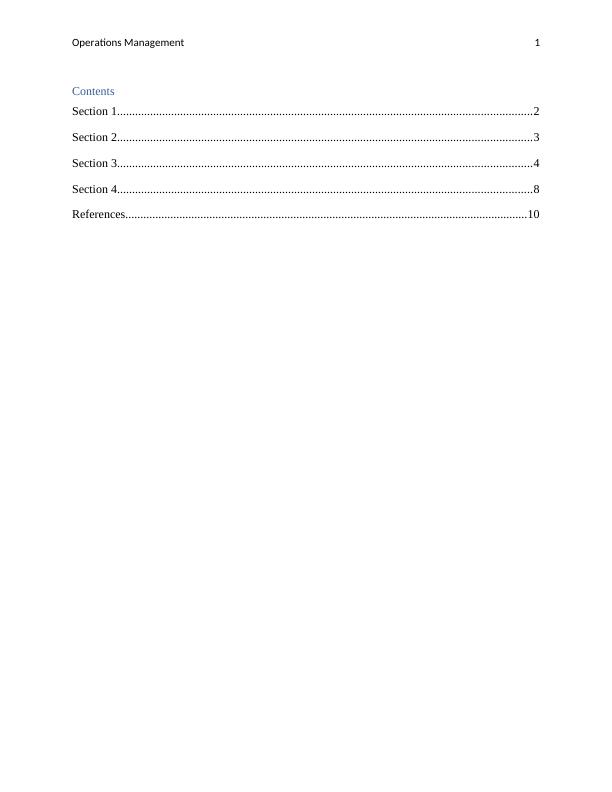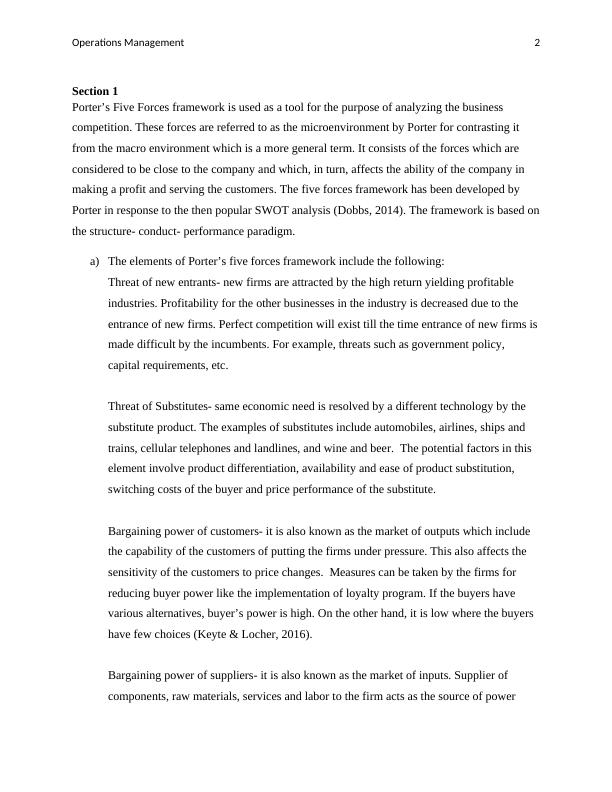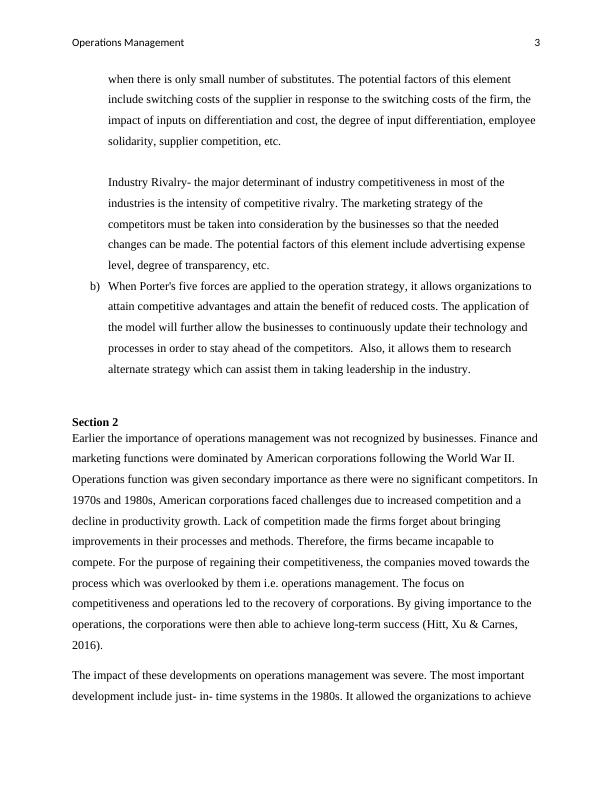Operations Management: Porter's Five Forces, Importance, Product Design, Supply Chain Design, Outsourcing, and Merger Guidelines
This assignment involves discussing Porter's Five Forces, the historical development of Operations Management, the product design process, breakeven analysis, process performance metrics, supply chain designs, outsourcing, and a research paper in APA format.
13 Pages3754 Words378 Views
Added on 2023-06-10
About This Document
This article covers Porter's Five Forces, the importance of operations management, product design process, supply chain design, outsourcing, and merger guidelines in operations management. It discusses the subject, course code, course name, and college/university.
Operations Management: Porter's Five Forces, Importance, Product Design, Supply Chain Design, Outsourcing, and Merger Guidelines
This assignment involves discussing Porter's Five Forces, the historical development of Operations Management, the product design process, breakeven analysis, process performance metrics, supply chain designs, outsourcing, and a research paper in APA format.
Added on 2023-06-10
ShareRelated Documents
End of preview
Want to access all the pages? Upload your documents or become a member.
Porter's Five Forces of Competition
|6
|1344
|313
Business Strategy (P3)
|12
|661
|362
Porter's Five Forces Model for Wesfarmers
|12
|1031
|302
Business Level Strategies : PDF
|10
|2125
|50
Analysis of Strategic Tools in Management
|10
|1678
|29
Strategic Analysis of Starbucks: Porter's Five Forces and VRIO Model
|7
|1406
|45




